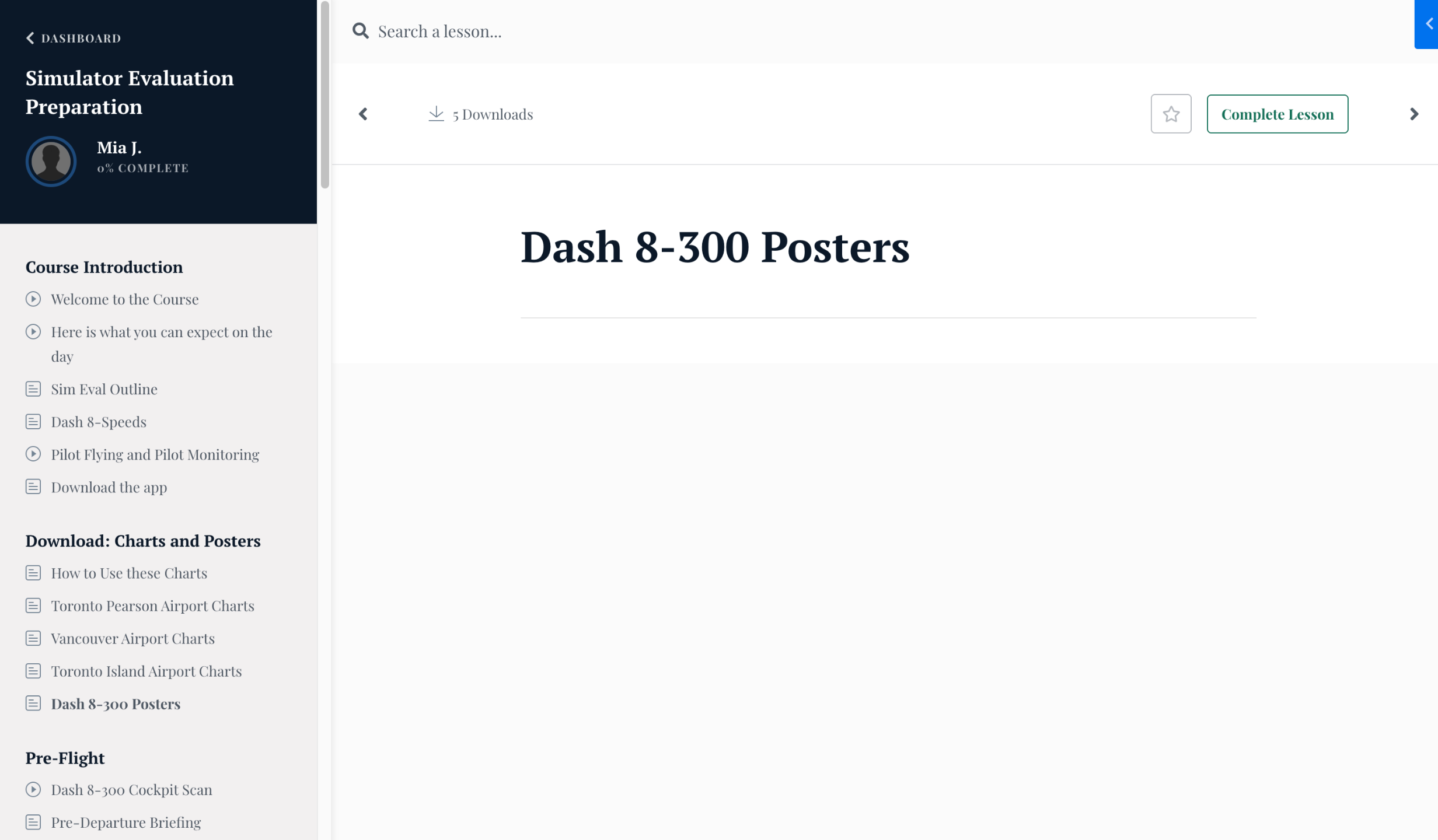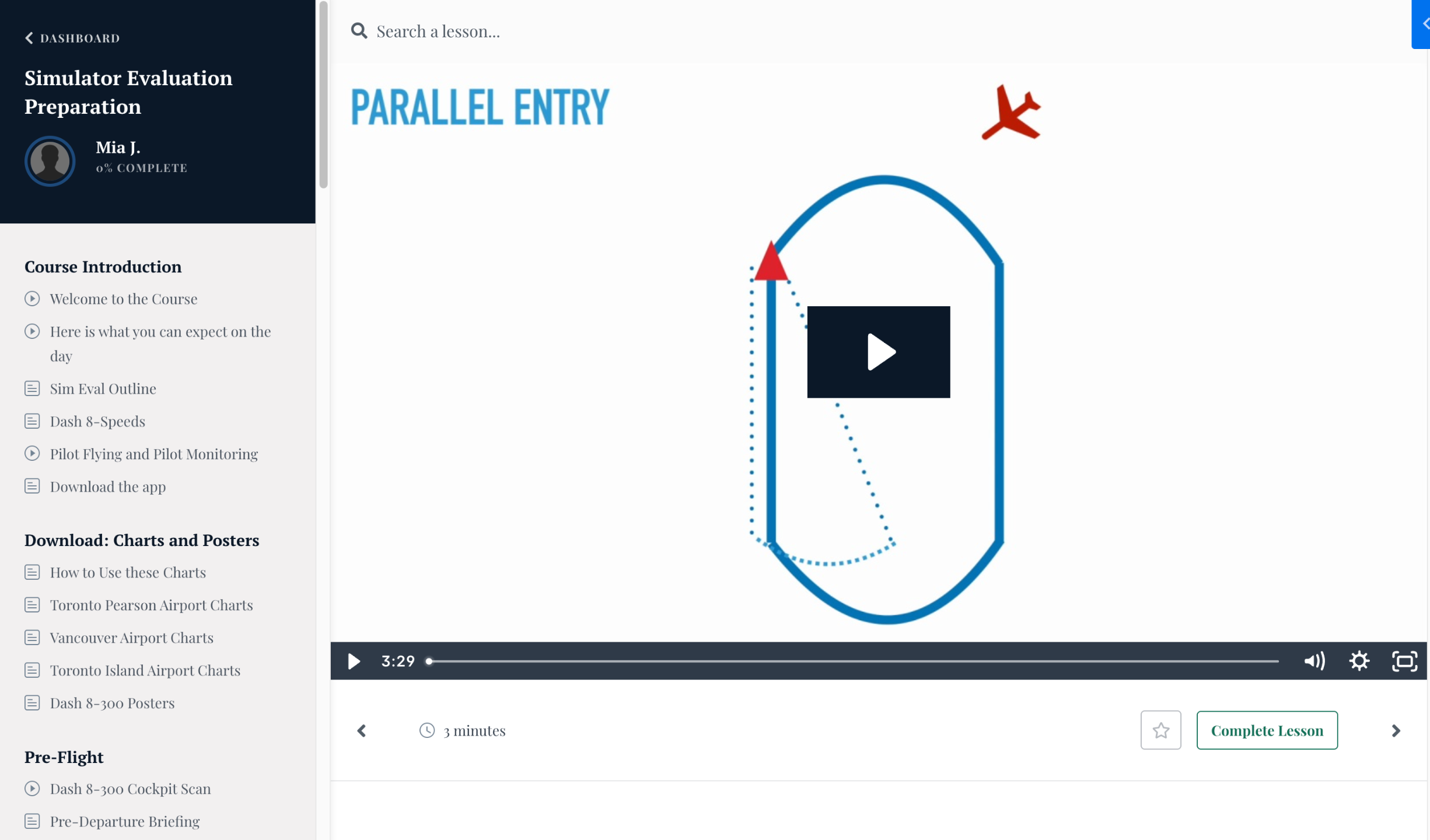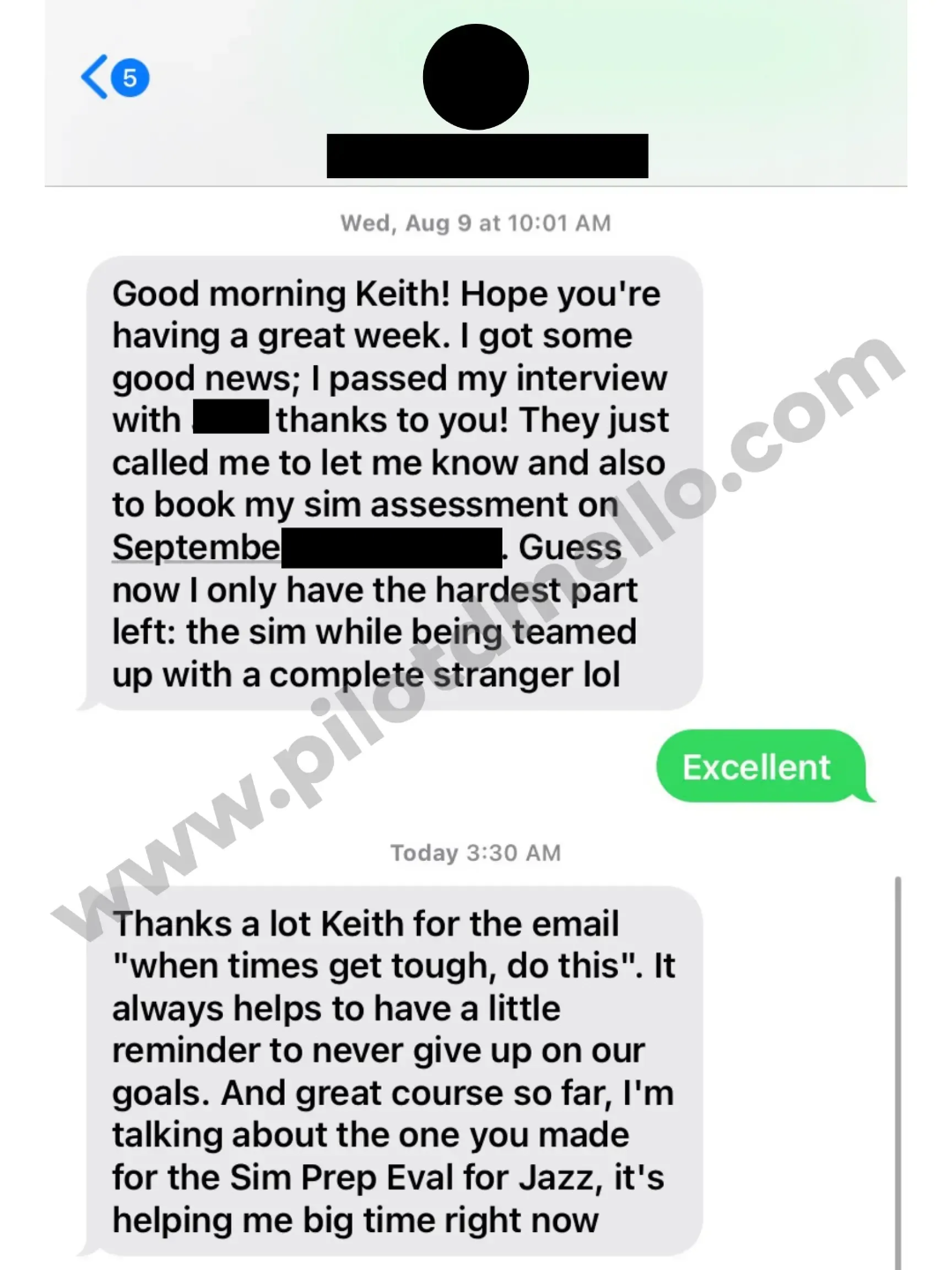Simulator Evaluation Preparation
PASS NOWPASS the Dash 8-300 Sim Eval on Your FIRST Try
Made with You in Mind: Helping Flight Instructors & Pilots with Low Turbine Hours.

Fail Here, and It’s Game Over
The simulator evaluation isn’t just a test—it’s a make-or-break moment in your career. It’s the final step, and if you don’t pass, everything you’ve worked for could vanish in an instant.
This isn’t a simple skills check. They call it the “sweat box” for a reason: hours of grueling, back-to-back maneuvers that push even experienced pilots to their limits. One small mistake could cost you the job.
Failing at this stage doesn’t just mean rejection—it means wasted time, wasted effort, and another year stuck in a job you hate or grinding it out as an instructor while others take the jobs you deserve.
Don’t let this happen to you.
You’ve come too far to fall short now. Preparation is the difference between success and failure, and it starts today.
Sign up now before it’s too late—your future depends on it.

The most challenging parts of the Simulator Evaluation are:
Mastering Hold Entries
Knowing how to enter a hold from any direction isn’t optional—it’s essential.
Many pilots can figure it out on paper for exams, but in the real world, flying a fast aircraft like the Dash 8 is a completely different challenge.
Mistakes in the air have real consequences.
Flying the wrong hold entry can put you in unprotected airspace, exposing you to serious violations—and risking your career.
The stakes are too high to rely on guesswork or outdated techniques. To stand out and stay safe, you need to be fast, accurate, and confident.
Don’t leave this to chance.

Can You Handle a Large Turboprop on One Engine?
Flying a large turboprop on a single engine isn’t just a skill—it’s a test of everything you’ve trained for. This isn’t your flight school twin trainer or a lightweight King Air. The yaw in these aircraft is intense, and the workload is overwhelming.
Picture this: you’re managing extreme yaw, reciting emergency procedures, navigating, and briefing—all at once. This is where regular pilots are separated from First Officers.
In the chaos, one wrong move—like shutting down the good engine—could spell disaster.
You need the confidence and precision to handle high-pressure situations like these.

You Can’t Control Your Partner—But You Can Control Your Preparation
In the sim evaluation, you don’t know who you’ll be paired with. Sometimes, you’re lucky and get a competent pilot equally focused on securing the job.
Other times? You’re stuck with someone who’s nervous, unprepared, or completely lost. Suddenly, it feels like you’re flying solo—managing not just your performance, but theirs too.
In that moment, your preparation is all that matters.
When the pressure is on, you need to be sharp, confident, and capable of handling anything—regardless of who’s sitting next to you.
"But I Don't Need Preparation—I've Been Flying for Years."
The pilots who fail the most are often the ones who think they can coast on experience alone. Sure, you've been flying for years, but I’m willing to bet your current company’s SOP is nothing like the detailed, high-stakes procedures you’ll face with a big airline.
In a real two-crew environment, there are countless calls, procedures, and protocols that must be followed to ensure passenger safety. This is a whole new level of responsibility.
And if you're currently flying in a remote area of Canada, hoping for a change of scenery, or seeking a bigger paycheck, you can’t afford to fail. Failing this eval could mean another six months "up north"—or worse, staying stuck where you are.
Do whatever it takes to prepare and secure your future.
"My Friend Told Me What to Expect, So I Should Be Fine."
While it’s great to use all the information you have, don’t rely too heavily on what someone else has experienced. The sim eval process changes regularly to keep candidates on their toes. What worked for your friend might not apply to you.
Plus, you won’t get a professional ‘mock sim eval’ to test your knowledge before the real thing. Going in without that crucial practice could leave you underprepared and lacking the confidence you need.
Prepare the right way—don’t risk it based on outdated advice.
"I’ve Never Flown a Dash 8 Before. Do They Expect Me to Fly It Perfectly?"
It’s understandable to feel nervous if you haven’t flown a Dash 8 before. But don’t worry—the examiner knows that.
Flying the aircraft is only 50% of the evaluation. What they’re really looking for are critical skills like your Crew Resource Management, adherence to SOPs, attitude, ability to read Jeppesen approach plates, handling pressure from ATC, and how well you manage emergencies.
It’s not just about flying—it’s about how you perform under pressure and work as part of the team. Your overall attitude and professionalism are just as important as your flying skills.
Prepare fully—show them you’ve got what it takes, not just to fly, but to excel.
Your Simple Solution to Prepare for the Sim Eval
The solution is straightforward: I’ll provide you with a step-by-step, easy-to-follow method that’s been perfected over 50 sim evals with other pilots.
We’ll kick off your prep with instant access to our comprehensive online lessons. These lessons are designed to walk you through every key phase of the sim eval—starting with the pre-departure briefings and procedures, moving through takeoff, steep turns, holds, emergency handling, approaches, and landing.
Every maneuver, every procedure, in the right order—you’ll be fully prepared and confident when it’s time for your sim eval.

Course Sample 1: Pilot Flying vs. Pilot Monitoring
In a two-crew environment, the duties of Pilot Flying and Pilot Monitoring are clearly split—and understanding these roles is critical for success.
Throughout the sim eval, you’ll learn exactly when to take on each role and how to effectively execute the responsibilities during different phases of flight.
Mixing up these roles can lead to confusion and mistakes—and in a high-pressure eval, that’s the last thing you want.
Our course will ensure you have a clear grasp of these vital duties, so you can operate smoothly and confidently in any situation.
Course Sample 2: Emergency Procedures
In an emergency, knowing your role as either the Pilot Flying or Pilot Monitoring is crucial. You’ll learn to correctly distinguish these duties during critical situations, ensuring you handle emergencies smoothly and effectively.
For instance, during an engine failure, there’s a specific order of steps to follow to ensure you shut down the dead engine—and not the good one by mistake.
You’ll also master Crew Resource Management (CRM), making the right calls under pressure and ensuring clear communication during an emergency.
I’ll share my top tips and tricks—gained from flying many large aircraft—that will help you impress the examiner with your calm, confident handling of any emergency scenario.


You Only Get One Shot – Make It Count
Imagine the regret of missing your chance simply because you weren’t fully prepared. Don’t let that be your story.
The effort you put in today will define your tomorrow. Airlines move quickly after the simulator evaluation, and the competition is fierce. But with the right preparation, you can stand out and secure your spot as a First Officer.
Confidence comes from preparation. When you walk into the sim ready and assured, success follows.
This is your moment to take control of your future.
Sign up now and start your journey today!
Course Preview: Here is what you can expect to see...
Free Chart and Poster Download Preview
Explore sample charts and posters with detailed explanations to understand key concepts and data insights at a glance.

Video Lessons Preview
Straight to the point short video lessons. No more endless hours of pointless slides.

And many more within the course...
Sim Eval Reviews
Watch video testimonials from our students, followed by real proof of their exam success.

Detailed Review

Detailed Review

Detailed Review

Detailed Review

Detailed Review

Detailed Review

Detailed Review

Detailed Review

Detailed Review

Detailed Review

Detailed Review

Detailed Review

Detailed Review

Detailed Review

Detailed Review

Detailed Review

Detailed Review

Detailed Review

Detailed Review

Detailed Review

Detailed Review

Detailed Review

Detailed Review

Detailed Review

Detailed Review

Detailed Review

Detailed Review

Detailed Review

Detailed Review

Detailed Review

Detailed Review

Detailed Review

